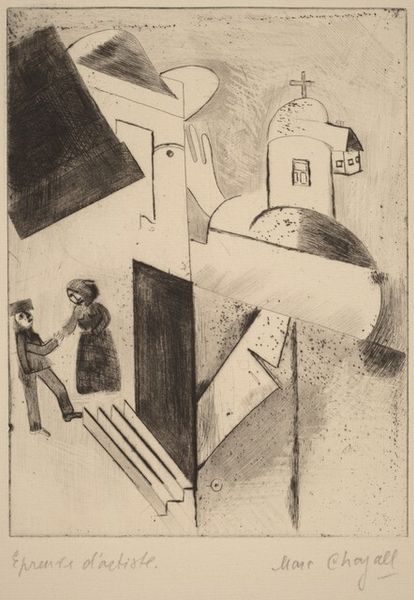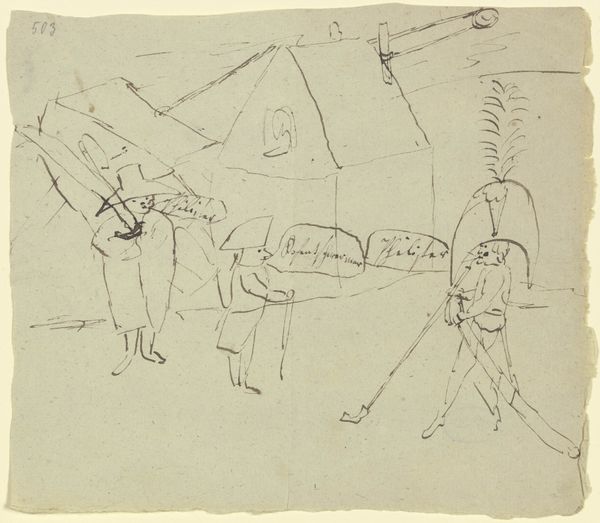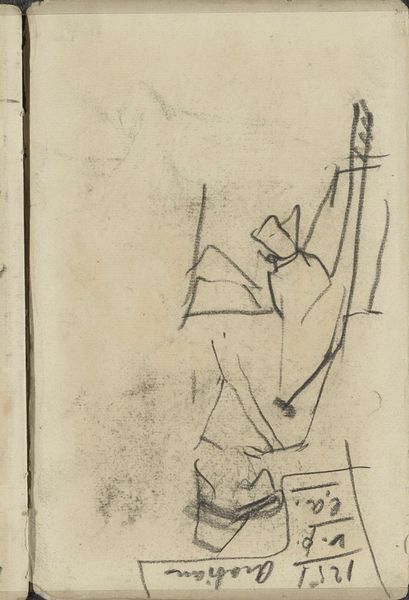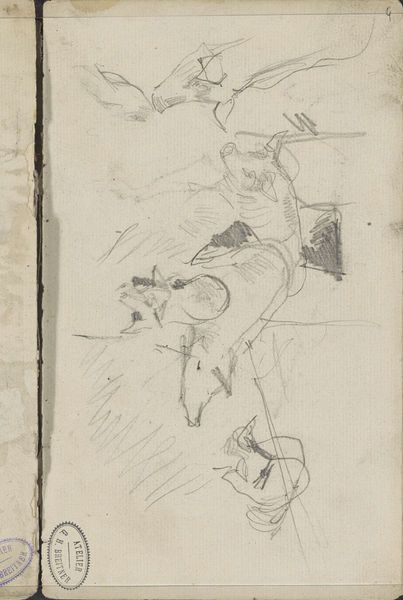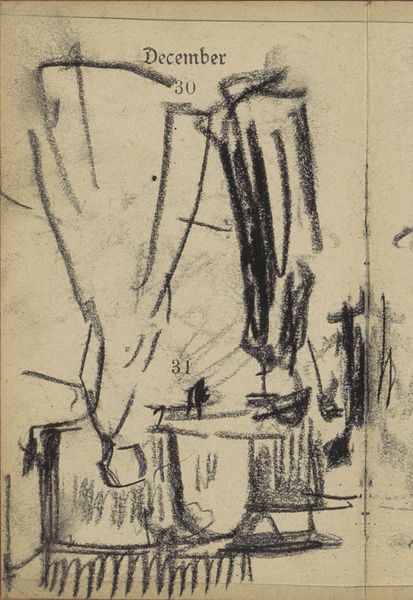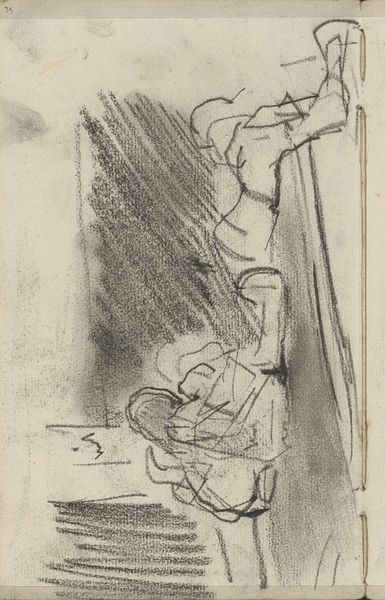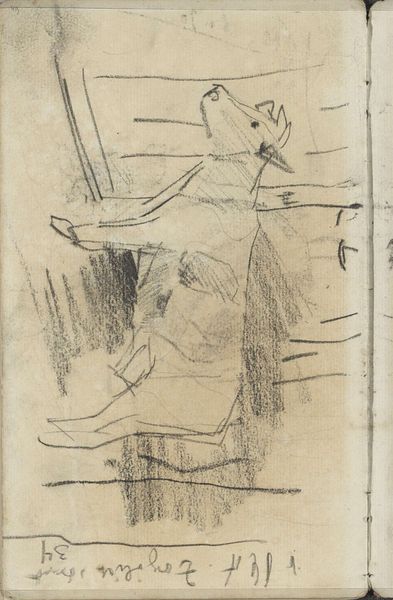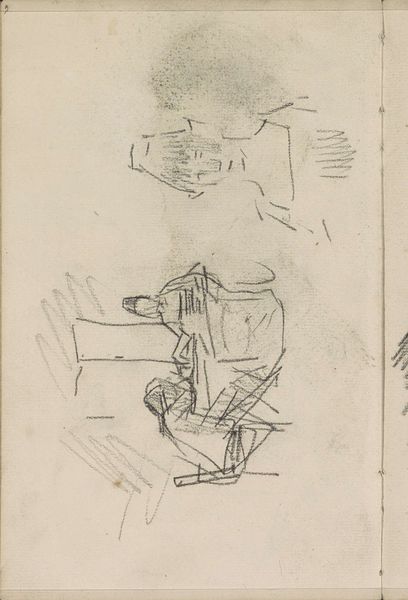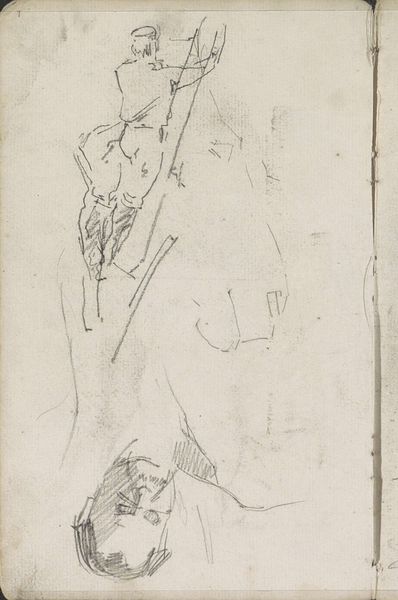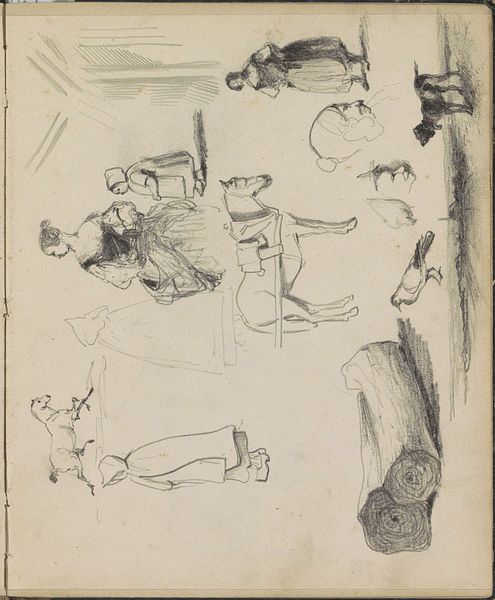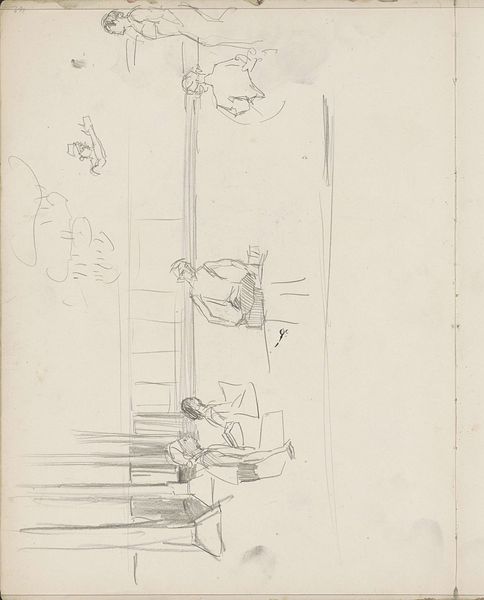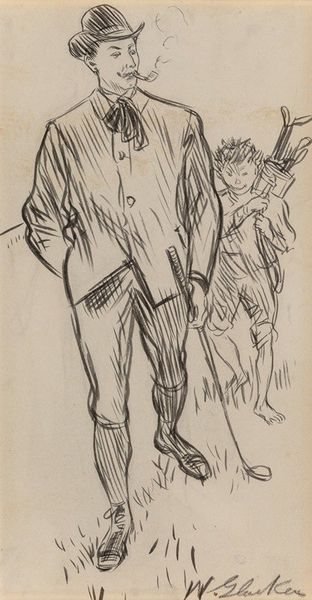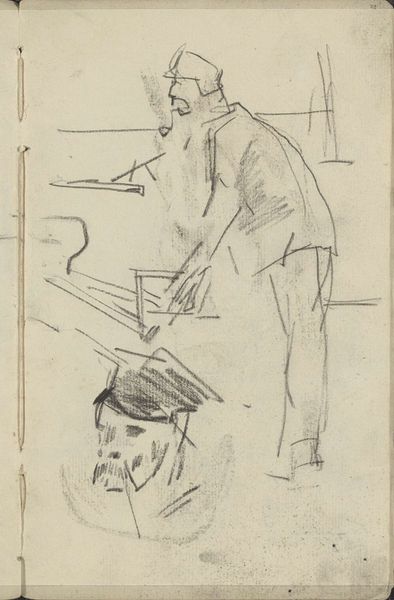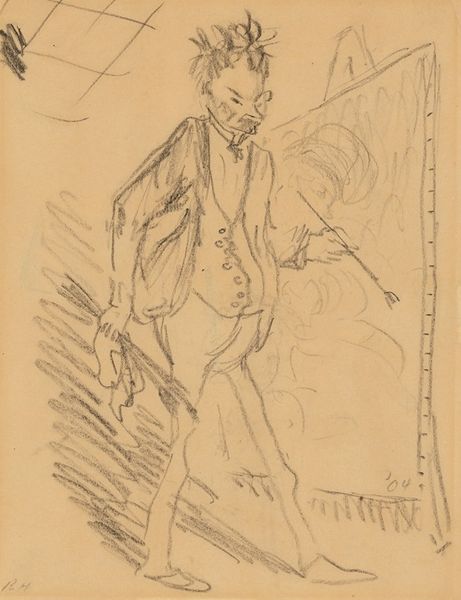
Dimensions: plate: 17.5 x 14.5 cm (6 7/8 x 5 11/16 in.) sheet: 30 x 24.4 cm (11 13/16 x 9 5/8 in.)
Copyright: National Gallery of Art: CC0 1.0
Curator: Here we have Marc Chagall’s "Promenade II," created in 1922. This print, an etching, immediately strikes me as playful, almost buoyant, despite the somewhat muted tones. What is your initial impression? Editor: There is definitely an uplifting quality—a powerful commentary, even. I am thinking about gender roles and power dynamics during this time. Her freedom juxtaposed with his grounded posture feels deliberate, a subtle feminist statement maybe? Curator: Intriguing observation! Focusing on the formal qualities, the composition presents a fascinating interplay of line and form. Notice the angular depiction of the village buildings contrasted with the fluid, almost weightless portrayal of the figures. It introduces a visual dialogue between stability and liberation. Editor: Precisely, and I feel it is not a coincidence. Situated within the context of the Russian avant-garde, which saw women emerge from obscurity and become active participants in shaping national identity, I wonder if the flying female figure challenges established expectations for women during that time. Perhaps, a call for social change? Curator: You read so much intention into it! From my perspective, the juxtaposition speaks to Chagall’s cubist inclinations; he uses geometric abstraction to create spatial tension. But I would hardly label that a political statement. Instead, his visual style creates its own context—internal to the system of representation on the page. Editor: And I see politics woven into this abstraction, politics into what is being visualized and, most importantly, what is being abstracted and rendered absent from representation. Think of the context! What could be more profound for Chagall, after the First World War, and amid rising antisemitism in Russia, than suggesting flight from such restrictive materiality through these figures? Curator: Perhaps. But I see Chagall masterfully manipulating shape, texture, and line. Note his economy of means; he creates a dynamic relationship between figuration and abstraction that makes it so captivating and complete on its own, apart from contextual considerations. Editor: And I view these structural relations, too, but I am interested in the history of spectatorship in a period of crisis—war, antisemitism—as a factor contributing to its overall artistic expression and effect. Curator: We clearly have two distinct but equally legitimate frameworks for experiencing and interpreting this artwork. "Promenade II" can evoke deep feelings from diverse historical backgrounds. Editor: Precisely, each viewer adds a vital layer to this wonderful, evocative etching by Chagall, contributing, in turn, to its long and lively life beyond the constraints of that era.
Comments
No comments
Be the first to comment and join the conversation on the ultimate creative platform.
